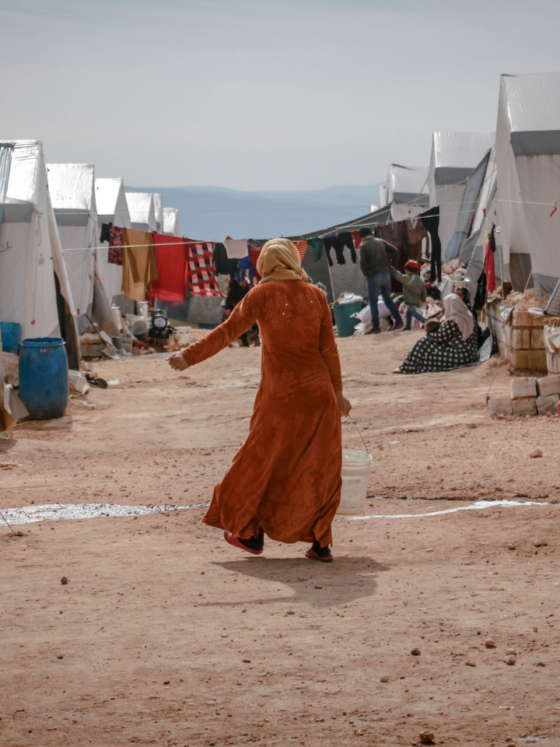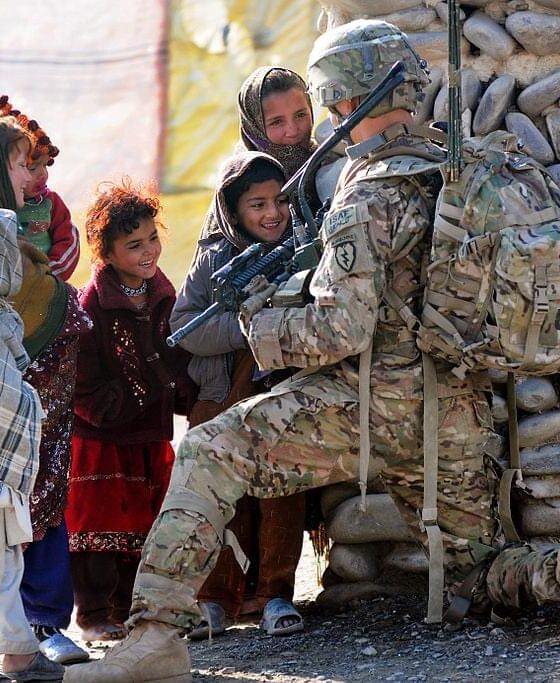Before we get started with discussing individual policies, it’s important we establish a working foundation of the basics of policy. In this article, I hope to break down policy to its core components.
Policy is complicated at every level, even down to its basic definition – I know, because when I began this article I logged into my research database and typed in “Policy,” and of the 89,742 articles and book chapters that popped up, not a single one of those articles could give me a working definition of policy in its simplest form. For the average citizen without a formal education in what is a very complex system of interacting institutions, lack of basic policy understanding makes it almost impossible for individuals to participate in making decisions about what most directly affects their daily lives.
Because policy affects everything from the air we breathe to the taxes we pay, to the way in which we interact with other countries, it’s important that we have a fundamental understanding of policy.
What is policy?
In its most basic form, policy is a plan for action, and it affects our day-to-day lives. Policy outlines how we approach problems in the world around us.
Policy affects everything from the food we put in our mouth to the maintenance we do on our cars, to the ways we address homelessness and violence in our communities, to our relationships with foreign countries. Policy is everywhere.
Policy can be both proactive and reactive. Proactive policy is created in order to prevent a problem before a problem takes place. Reactive policy is created to respond to a current and established problem.
An example of a proactive policy is when schools require immunizations for children to attend class. The requirement of immunizations is intended to safeguard children from vaccine-preventable diseases in spaces where transmission is high. The school is trying to create safety and prevent a problem before it starts.
An example of reactive policy is when the school starts a ‘Snack Pack’ program for children whose families cannot meet the children’s daily nutritional needs. In poorer communities, families may not have enough money to provide a student with three meals a day. If the school knows that some of their students are going hungry, the school may choose to send snack packs home with children in-need. This is an example of the school trying to respond to a problem that already exists.
What is the difference between law and policy?
Law and policy are often confused for one another, but they serve very different purposes in our society.
Laws are the set of rules that regulate the behavior of the members in the country or community that falls under the laws. They are used to implement justice and order. Breaking laws can result in penalties.
Policies are used to guide the decisions of organizations or institutions. These are the ‘How’ in our society – how we achieve an intended outcome and remain in compliance with the law. Not following policy does not necessarily mean you are breaking the law, but if you break policy you may still get into trouble with the agency whose policy you violated.
An example of law is the Education for All Handicapped Children Act enacted in 1966. This law requires that all schools receiving federal funding must provide equal access to education to handicap children and one free meal a day.
An example of policy is the school’s special education needs protocol developed which outlines how the school will uphold the law and provide children with equal access to education.
Policies can be used to create law. Law can require that policies be created in order to ensure that the law can be upheld.
Who makes policy?
Anyone can create policy. A policy maker is a person who makes decisions for a collective group or organization. A corporation’s board of directors, school boards, mayors, governors, and the President of the United States are all examples of policy makers.
In a corporation, a board of directors will make the decisions for the companies corporate policy. This means, the board of directors will likely do two things. The first things they will do is decide their internal policies, such as the policies that employees are expected to follow. These exist so that companies can best achieve their corporate goals. The second thing they will decide is how shoppers or users are allowed to engage with the company.
An example of a company policy that a shopper may have to follow is a mask mandate. Though there may not be a law that requires wearing a mask, the company may require a mask as part of walking into their store. In this scenario, a mask is a company policy that a shopper must agree to in order for them to utilize the store’s services. The store may deny services if users or shoppers that do not comply with their company policy or the law.
Likewise, a governor may create statewide policy. Governors make decisions for the people that live in the state they govern. They make decisions about everything from social services to inter-state trade, to how problems the state faces will be solved.
An example of state-wide policy is when the governor of a state decides that one of the issues they want to address is the state’s justice system. Policy is how they choose to address the broken parts of the justice system. The policy may outline defunding police, or it may increase funding for social services, or it may choose to decriminalize lower level offenses so that the jails are not occupied by non-threatening offenders. Though some of us may not see the change directly in our day-to-day lives, policies affect all of the people of the state.
How is policy created?
Step One: Agenda
When something becomes a concern for a significant amount of people, that concern becomes part of an agenda.
In a government setting, there may be a shared concern from citizens that is addressed by the local, regional, state, or federal government, depending on the size of the concern. In a corporate setting, there may be a shared concern from employees that is addressed by the board of directors.
Concerns often arise as part of a rising trend, after a major event, through special-interest groups, or through raised awareness by individuals. An example of a rising trend is the conversation surrounding the cost of living in relation to a minimum wage that has not changed. An example of policy following a major event is the government’s plan to improve employment after all the COVID-19 related job losses. Special interest groups such as non-profit organizations may raise awareness about concerns in their community that the government is failing to address, such as child abuse and neglect. Individuals may raise awareness by giving speeches or posting on social media, then garnering the support of others which creates a collective movement.
Step Two: Formulation
Policy is formulated. In this stage, a policy approach is determined. Sometimes people disagree whether a problem exists. Sometimes people agree that a problem exists, but they disagree about how to handle the problem. In this stage, participating parties will debate issues, and how they should be handled.
A prime example is the debates happening between the Democratic and Republican parties, alongside interest groups, who are arguing about the most effective stimulus package.
Step Three: Adoption
Once a consensus has been reached, the group adopts the policy solution. Laws may be established in response to the adopted policy.
In a corporate setting, new policies may be written that reflect the consensus of the governing board members.
Step Four: Implementation
Once a policy has been adopted, it must then be implemented. In this stage it is decided who will do what in order to carry out the new policies.
For example, if the governor decides to improve the justice system, in this stage the burden of the new policies is delegated to the people who will lead the effort. In this example it may be police officers, social workers, or correction officers.
Step Five: Evaluate
Once a policy is implemented, it is important to evaluate if the policy has effectively achieved its intended outcome. This is often done by the government, governing bodies, or policy stakeholders.
Good Policy will solve the intended problem. Poor policy will fail to solve the problem, and may even cause more problems. We will talk about this more below.
What areas of life do policies affect?
Policies affect almost everything we do. Because they are integral to almost every part of our life, there are a lot of areas of policy. Below is an incomplete list of examples. Each of these have branches of policy underneath it.
As an example, education policy encompasses school size, class size, implemented teaching approaches, teacher certification, educator pay, and graduation requirements…just to name a few. Likewise, each of the following example categories has a lot that falls under it.
- Company Policy
- Insurance Policy
- Privacy Policy
- Public Policy
- Defense Policy
- Economic Policy
- Domestic Policy
- Foreign Policy
- Trade Policy
- Education Policy
- Environmental Policy
- Health Policy
- Science Policy
- Social Policy
For the sake of keeping it simple, I am not going to break each of these categories down further.
Good Policy vs. Bad Policy
Effective policy makers base their decisions on scientific research and social/environmental factors. Good policy is informed by data, social/environmental factors, and involves policy stakeholders. It creates functional systems where problems are addressed, the people are involved, and their needs are met.
Good policy can lead to:
- Solved problems
- Systems for people to successfully operate and thrive in
- Reduces inequality
- Safer environments
- Good governance
- Political stability
- Less crime
- Controlled corruption
- Happier and healthier societies
Ineffective policy often ignores or leaves out scientific data and/or social and environmental factors in establishing its plan of action.
Bad policy can lead to:
- Political instability
- Oppression or marginalization
- Corruption
- Dangerous environments
- Poor economic growth
- A problem not changing, or getting worse
- Systems people cannot successfully thrive in
- Unhappy and unhealthy societies
Why does policy matter?
The United States is arguably unstable at this time. One of the biggest problems we face however, is that we believe we are fighting each other, rather than recognizing that we are all actually fighting poor policy structures.
If you care about health, food security, the value of the dollar, climate change, education, migration, family stability, crime, poverty, oppression, drug or human trafficking, war, wages, voter supression, gun control, your constitutional rights, or any combination of these examples, you care about policy. You could care about none of the things on the list, but if you are passionate about really anything on earth, I’d venture a strong guess that you also care about policy in some form or another.
Policy matters because you matter, and because your life is shaped by the forces of good and bad policy at work in the world around you. Understanding this, and understanding policy helps us to make better and more informed decisions about our future. We have a lot of dynamic problems that need addressed, many of which can be addressed through how we address policy.
Why is policy so complicated?
You may be thinking to yourself – if policy is so important then why is it so complicated?
Well there are a few reasons.
Sometimes people don’t agree that there is a problem that needs to be addressed at all.
Other times, people agree that there is a problem, but they don’t agree with how to solve it.
And other times, problems intersect each other and no one has an idea yet on how to mitigate the second and third order effects of addressing the primary policy in question. Good and bad policy is not just one layer deep. How people and policies interact with each other create our systems as a whole, and changing one can have a domino effect on the rest.
For example, environmental protection policy will affect things like fuel consumption and coal mining. When environmental protection policy is established everything from trade, to farmers, to the economy could be affected. Though it’s important to protect the environment, creating solutions in one area can cause problems in another. Policy makers want cleaner air and water, but they don’t want to create bad policies that put people out of business and hurt the economy. This causes complications.
Lastly, policy creation at the highest levels has to go through a lot of channels which can make the formation of policy really messy. At the highest level of the United States, policy goes between Congress and the Executive branch, and then sometimes even the courts get involved. On top of the branches involved, the Democratic party and the Republican party disagree on policy approaches, which adds an added layer of complication. When policy is formed in this way, each involved party is likely arguing for the policy to be written in their own favor, which can cause problems and disagreements amongst the policymakers. This leads to a body of people fighting each other instead of fighting poor policy planning, like we see in our country today.
How do I find out more about policies that affect me?
Depending on what policies you are interested in learning more about, a good place to start is Congress.gov. This is where you can see what is going on at the Federal Level.
Ballotpedia.org is next on my list of favorite places to see what is happening in politics and policy. The website is user friendly and you can search by your state of interest, and then look at the category of policy you are interested in.
The World Health Organization is also a good place to look for foreign policies.
Each of these is linked below in the references section.
What area of policy does this blog focus on?
On this blog I observe and discuss state level, federal level, and foreign policy. This will include privacy, public, defense, economic, trade, education, environment, health, and social policy, and how these policies intersect one another. These are all really messy topics, and I am going to try to break down as simply as possible.
This means that when I talk about policy, I will not only talk about how the policy is approached, but how different policy areas affect each other.
When I talk about policy, I do my best to be best data-informed in my discussion and to approach it pragmatically, but I will also talk about it from a space of self-determination and individual liberties. I am not someone who believes that the end result justifies the means of achieving the result, and so in talking about policy I will talk about what I think about how things are achieved. This is where the article I wrote two weeks ago about my core beliefs becomes really important to our future discussions. CLICK HERE TO SEE THAT ARTICLE.
In the free section of the blog, I will take individual policies and talk about them. The upcoming policy piece has to do with privacy and social media policy.
In the paid newsletter section of the blog I will be focusing on mini-series. In this section I am currently working on finishing up the sex trafficking mini-series and beginning a series on the relationship between climate policy & foreign policy.
Can’t wait to get started,
Taylor Patrice
REFERENCES:
Dermody, A. (2017, August 15). Top 5 public policy issues in each state: Connectivity. Retrieved March 08, 2021, from https://info.cq.com/resources/top-public-policy-issues-each-state/
Library of Congress. (n.d.). Retrieved March 08, 2021, from https://www.congress.gov/
Ballotpedia. (n.d.). Retrieved March 08, 2021, from https://ballotpedia.org/Main_Page
Miller, M. C. (2004). Making policy, making law: An interbranch perspective. Washington, D.C.: Georgetown University Press.
SparkNotes. (n.d.). Retrieved March 08, 2021, from https://www.sparknotes.com/us-government-and-politics/
World health Organization. (n.d.). Retrieved March 08, 2021, from https://extranet.who.int/nutrition/gina/en/policies/summary











2 comments
Well, that was like getting a drink out of a fire hydrant! WOW! So much good information … presented step by step in a clear and understandable way! Thanks T! ❤️
That comparison gave me a good little chuckle. It was definitely a dense article to write and to read. I am glad that the information was clear and understandable. It was my hope to break the complexity of policy down into laymen’s terms so that as we get into the thick of policy, readers have the basics covered. Thanks for reading all the way to the end!
Comments are closed.